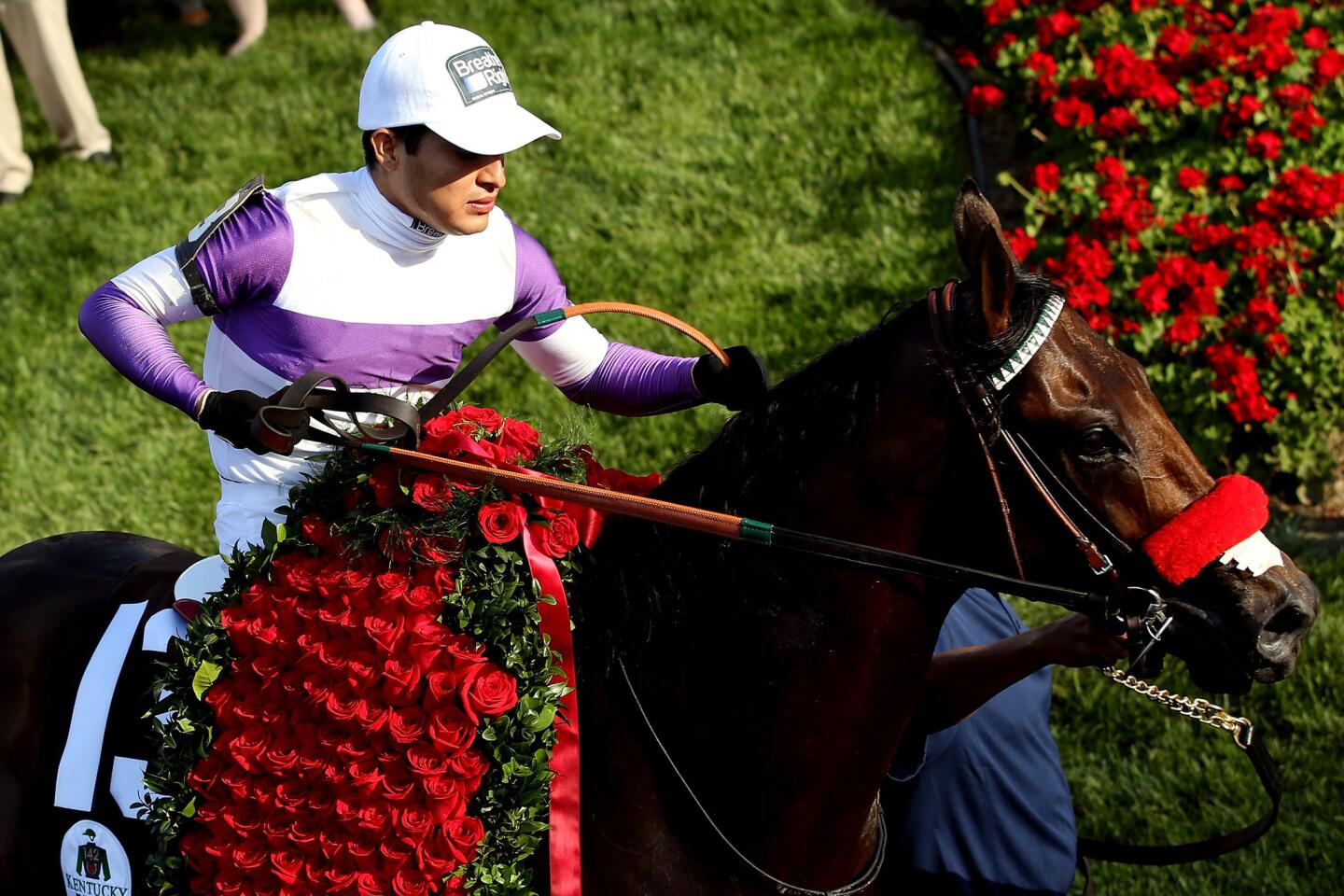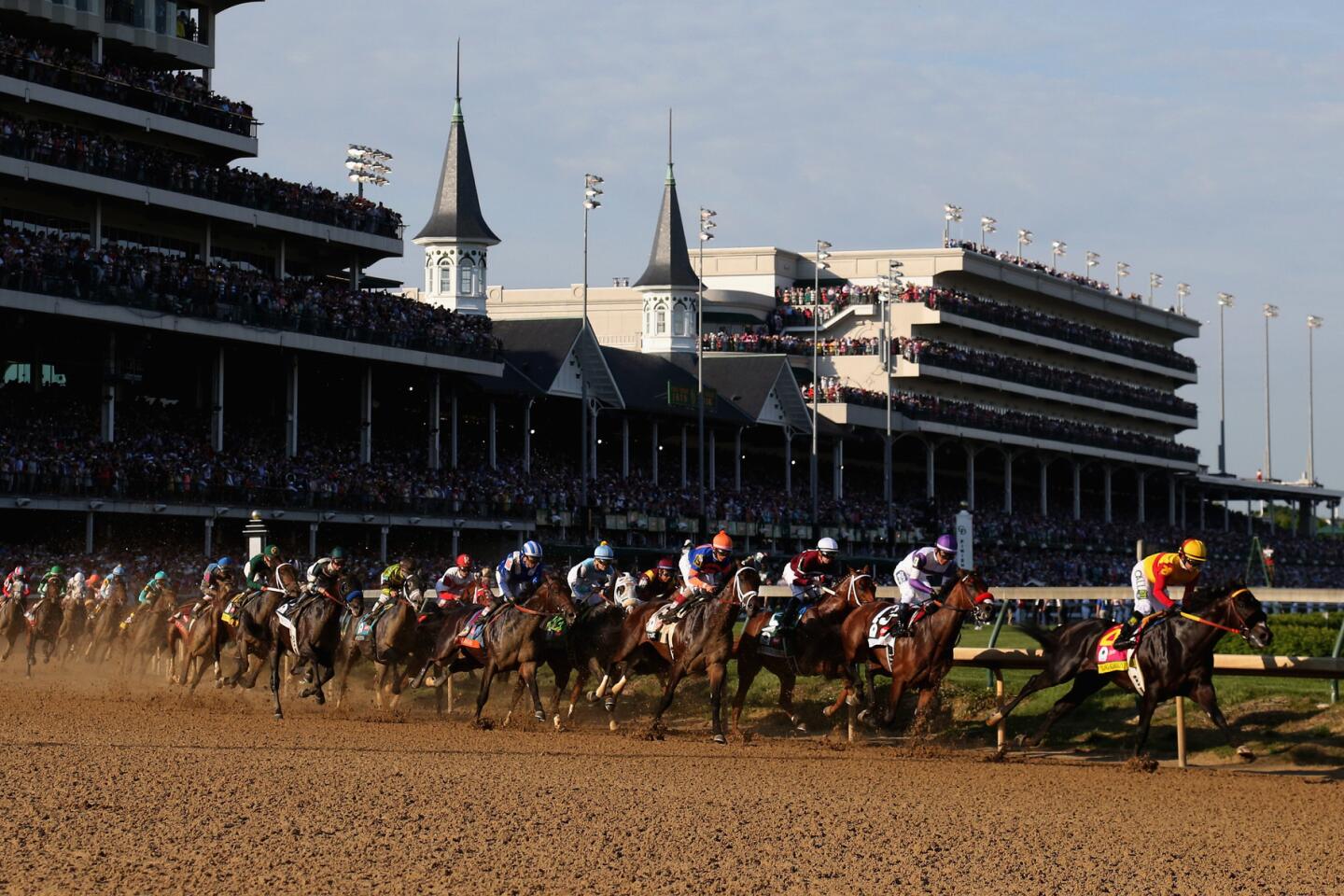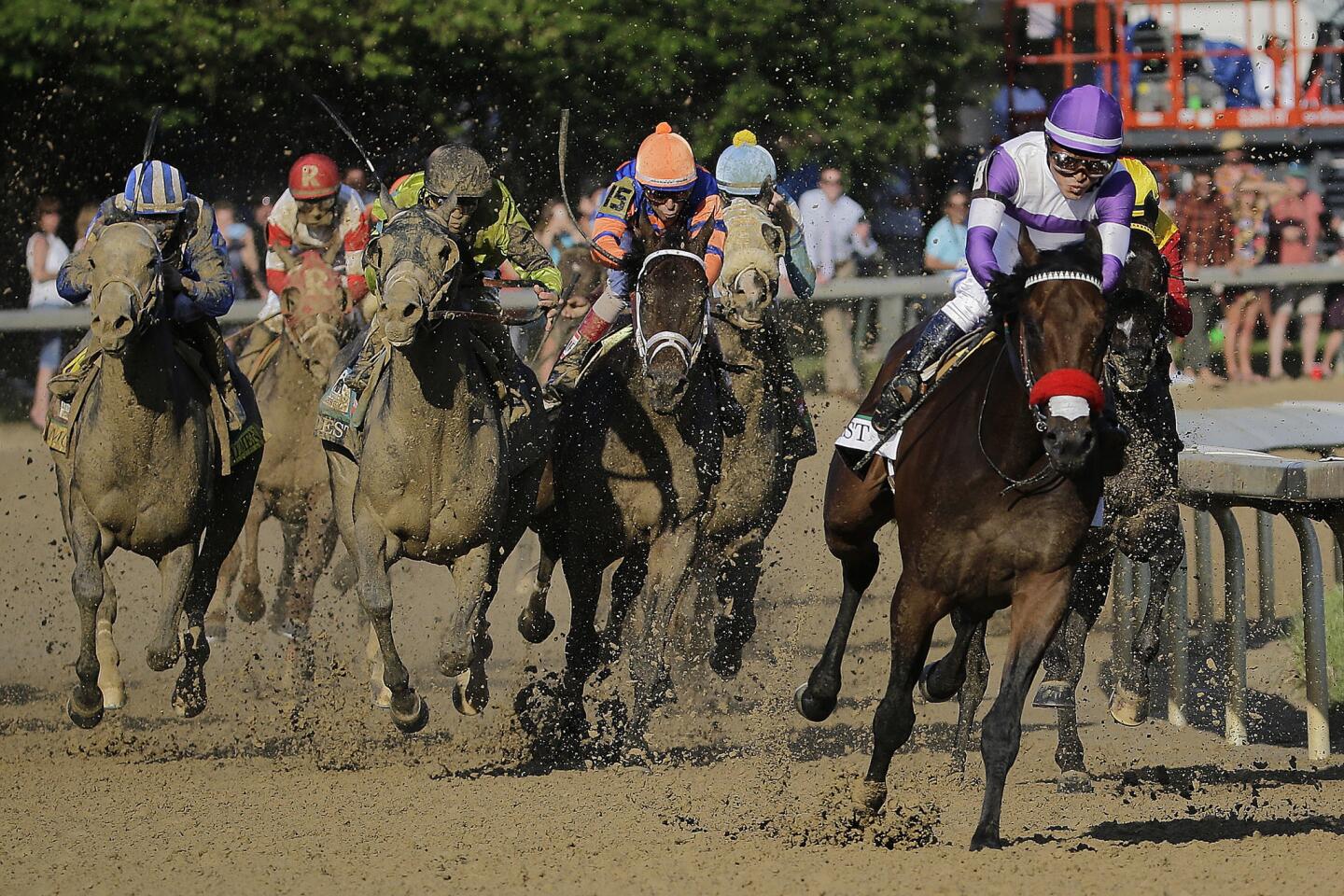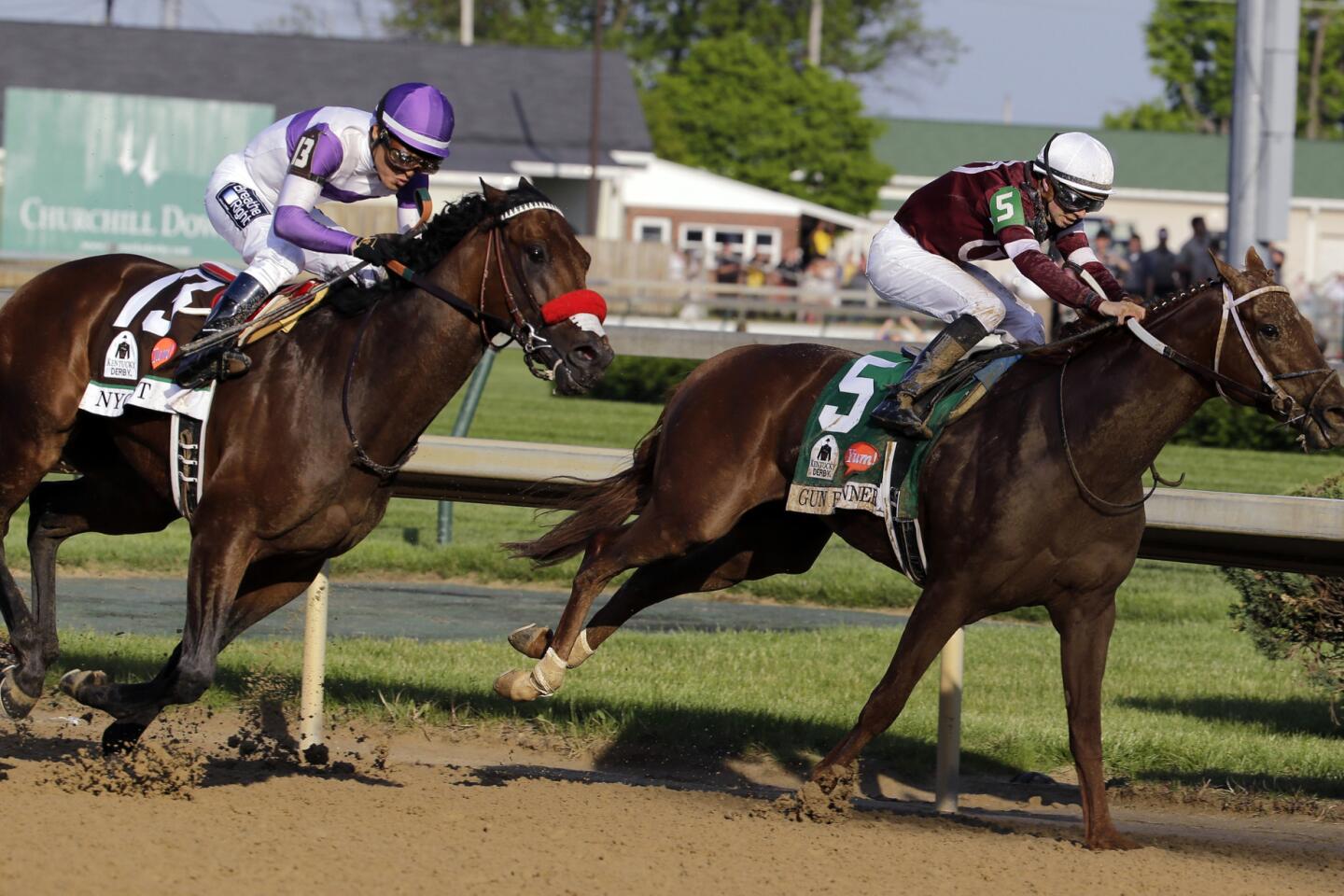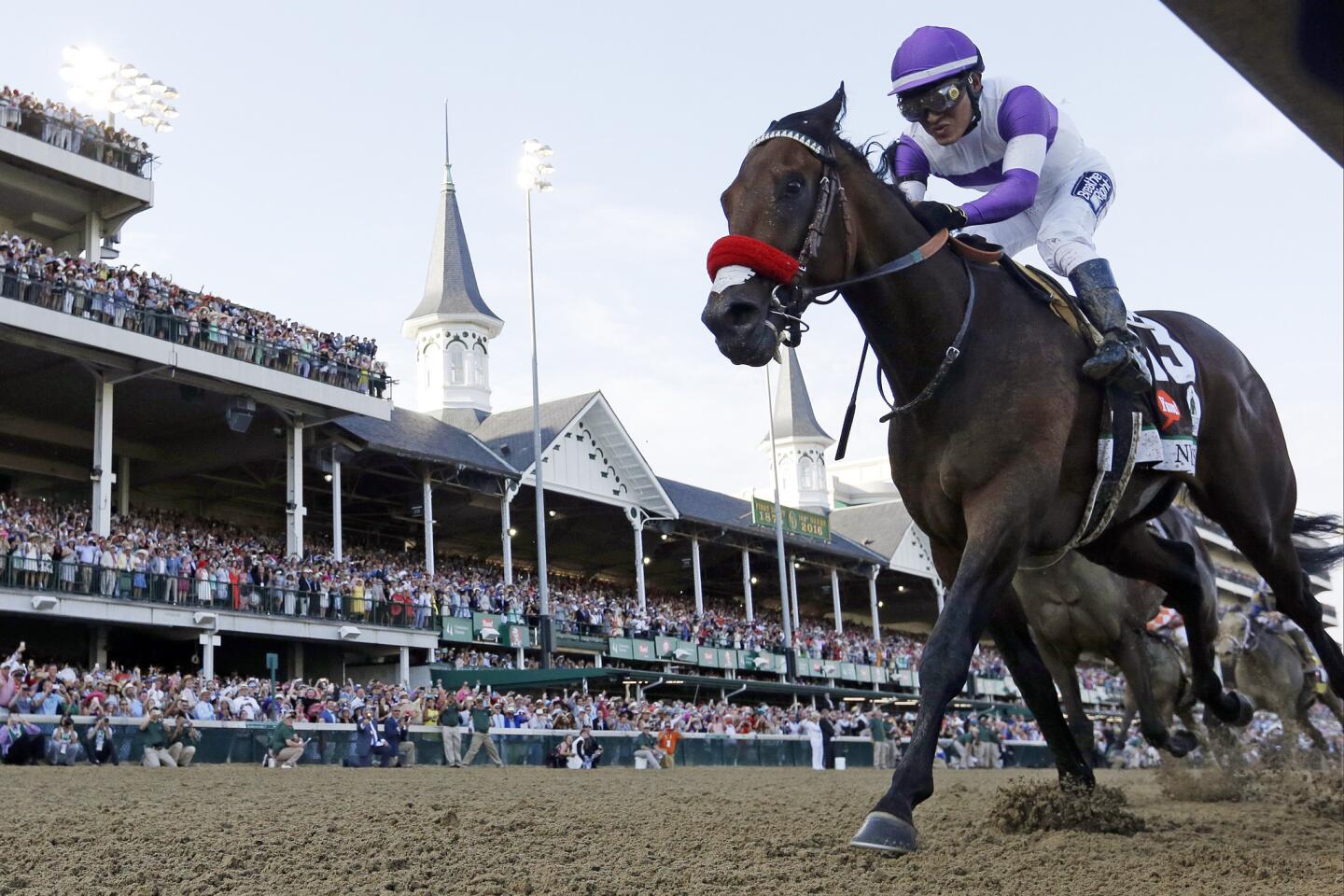Nyquist seen as a presumed victor at Preakness on Saturday
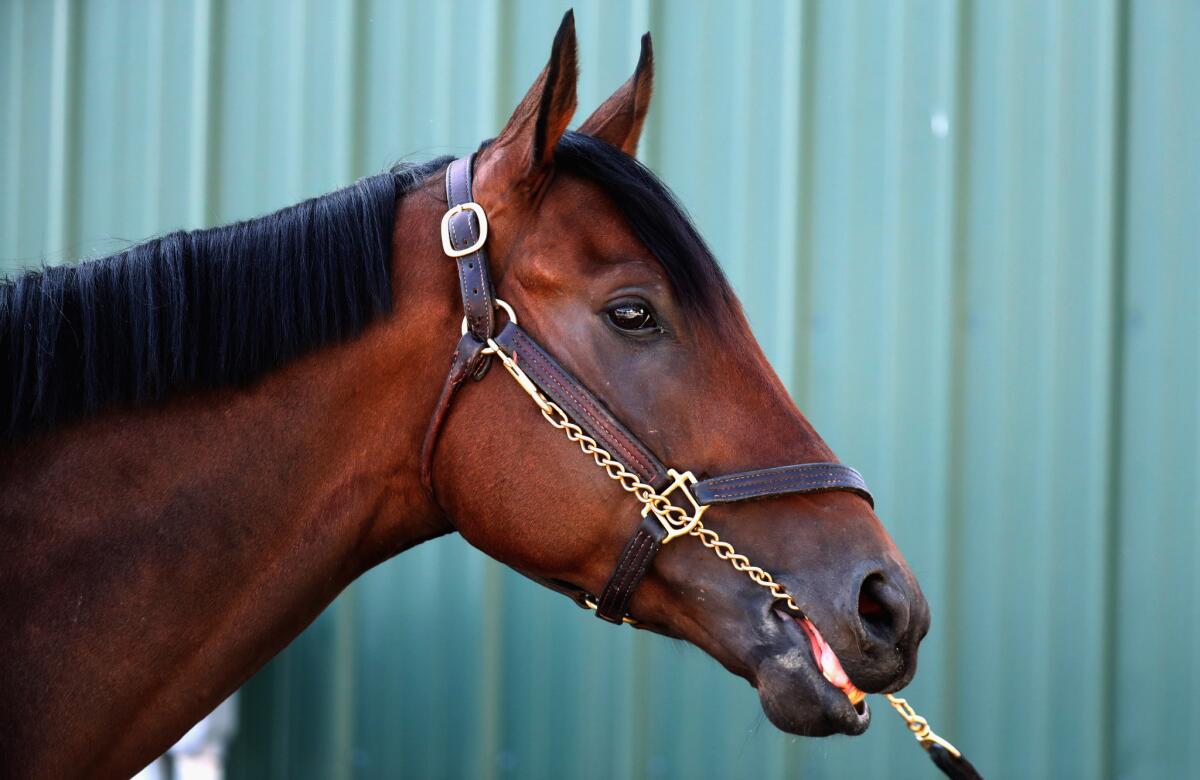
Nyquist gets a bath after training for the Preakness Stakes at Pimlico Race Course on Monday.
- Share via
Nyquist’s quest to be only the second undefeated horse in history to win the Triple Crown makes its next stop at Pimlico Race Course in Baltimore this Saturday.
Many see it as little more than a formality that he will win the Preakness Stakes and be a Belmont away from reaching the rarefied air of Seattle Slew, who was unbeaten when he won the Triple Crown in 1977.
But reaching that conclusion seems to be as much about the setup of the race as it is the horse.
“The Preakness is the easiest leg of them all,” said trainer Bob Baffert, who has won the race six times. “The toughest leg is the Derby. You’re dealing with 20 horses [in the Kentucky Derby] and you really have to get lucky. It’s easier if you have a front-runner because you can avoid all the traffic.”
Nyquist is a front-runner. He can go to the lead or set back in second or third just outside the leader waiting for him to tire.
Doug O’Neill, who trains Nyquist, offers the simplest reason it’s easier to win the Preakness.
“You’re coming back so quick [after two weeks], you don’t have time to screw them up,” O’Neill said.
Rarely do horses of such high quality run again just two weeks after a race. And the idea that the next race, 1½ miles on the dirt, a distance they will likely never run again in their life, is just three weeks after the 1 3/16-mile Preakness borders on insanity.
“Your horse is just so fit after running 1¼ miles,” O’Neill said. “And you’re also able to feed off the Derby victory and carry it right through to the Preakness.”
Get the latest in sports with our free newsletter >>
It seems especially true lately: Since 1997, 10 of 19 times the winner of the Derby has also won the Preakness.
Art Sherman, who won the Derby and Preakness in 2014 with California Chrome, agrees the Preakness is not the mountain to climb that the Derby is.
“I think the Preakness is probably a little easier than the Belmont,” Sherman said. “And it’s definitely easier than the Derby.”
Sherman also points to the fact that little needs to be done to the horse between races.
“I just galloped into the race,” Sherman said of his training regimen. “We didn’t do anything but school him. When you come back in two weeks you don’t want to press them.”
Baffert echoes that light work strategy, which O’Neill is using with Nyquist.
“If you win the Derby, then you know you’ve got a pretty good horse who is peaking. You don’t have to do much with them but keep them happy. Normally I don’t even work them in between.”
Hall of fame jockey Gary Stevens, who has won the Preakness three times, tempers the prevailing opinion about the ease of the race.
“If you can get through the Preakness in one piece, and come out of it like you were going into the Derby, the Belmont is the easiest,” Stevens said.
Fellow Hall of Fame jockey Mike Smith doesn’t agree. Stevens has won the Belmont three times and Smith twice.
“None of them are easy to win,” Smith said. “You are asking a lot of horses that were in the Derby to come back and run in the Preakness and then the Belmont. In the Belmont you hit a lot of fresh horses” who either didn’t run in the Derby or skipped the Preakness.
“The track you have to adjust to the most is the Belmont. It’s not normal, it’s a mile and a half … and the turns are humongous. Pimlico is pretty much like any track. It’s not a bullring by any means. It’s normal.”
The size of the turns at Pimlico has long been the subject of discussion.
Kent Desormeaux, who will ride presumptive second-favorite Exaggerator, plans to adjust his colt’s late-running style to the course.
“I think it’s usually even more of a speed bias racetrack due to the sharp turns and shorter stretch,” Desormeaux said. “You seldom see horses make up tons of ground at Old Hilltop,” Pimlico’s nickname.
Stevens thinks the whole tight turns at Pimlico story is a bit of fiction.
“If you listen to the wives’ tale, you hear that the turns at Pimlico are tighter,” Stevens said. “If you put the turns at Pimlico inside Churchill Downs [where the Derby is run], you will find they are identical.” He said Pimlico appears different “because the track is so narrow. It’s just an old wives’ tale.”
The width of the track is easy to quantify. Pimlico is 70 feet wide, while Churchill Downs is 80 feet. The Preakness caps at 14 horses, the Kentucky Derby at 20.
The debate on how easy the Preakness is can go on for days. What isn’t debatable is the respect Nyquist has gained in his eight races.
Baffert: “The only way you can beat a horse like Nyquist is if he doesn’t bring his A game or has bad racing luck.”
Sherman: “I think he’s the real McCoy.”
Stevens: “I saw video of Nyquist in training [last week] and I liked what I saw.”
Smith: “He’s a tremendous horse. Anyone who doubted him were doing it because they want go against the grain.”
Still, right now there are about 11 other trainers and owners who are willing to bet that if there is a special aligning of the stars, and a lot of racing luck, Nyquist can be beat.
Twitter: @jcherwa
ALSO
Widespread retesting finds 31 athletes doped at 2008 Beijing Olympics
In Santa Clarita, female soccer players fight for a league of their own
More to Read
Go beyond the scoreboard
Get the latest on L.A.'s teams in the daily Sports Report newsletter.
You may occasionally receive promotional content from the Los Angeles Times.
